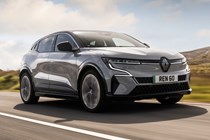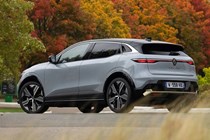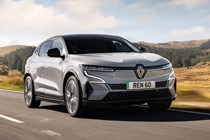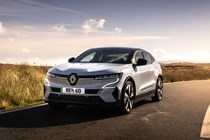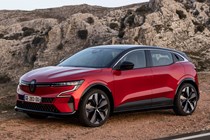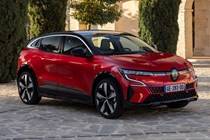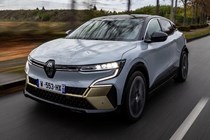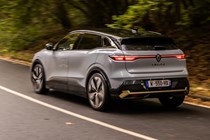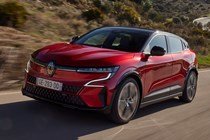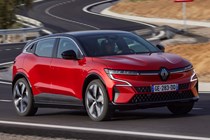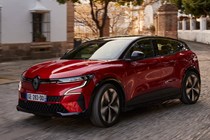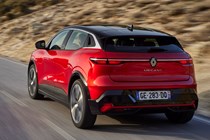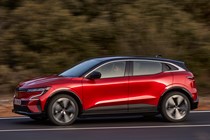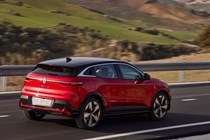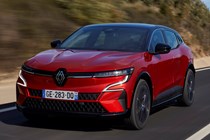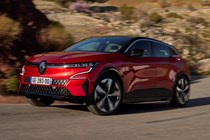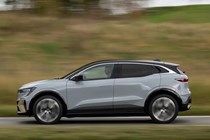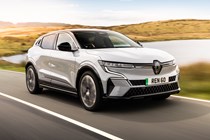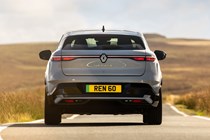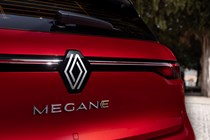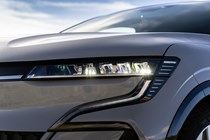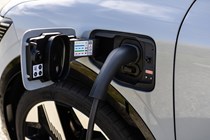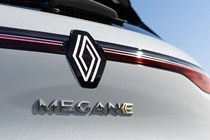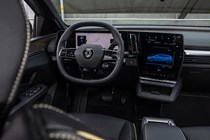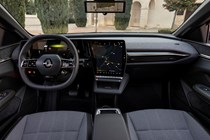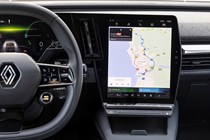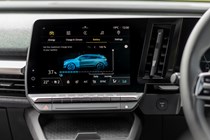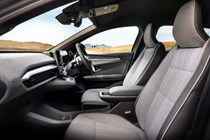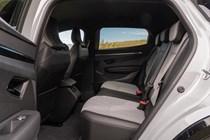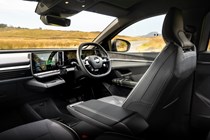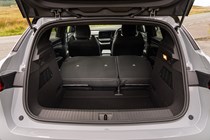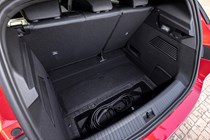
Renault Megane E-Tech engines, drive and performance
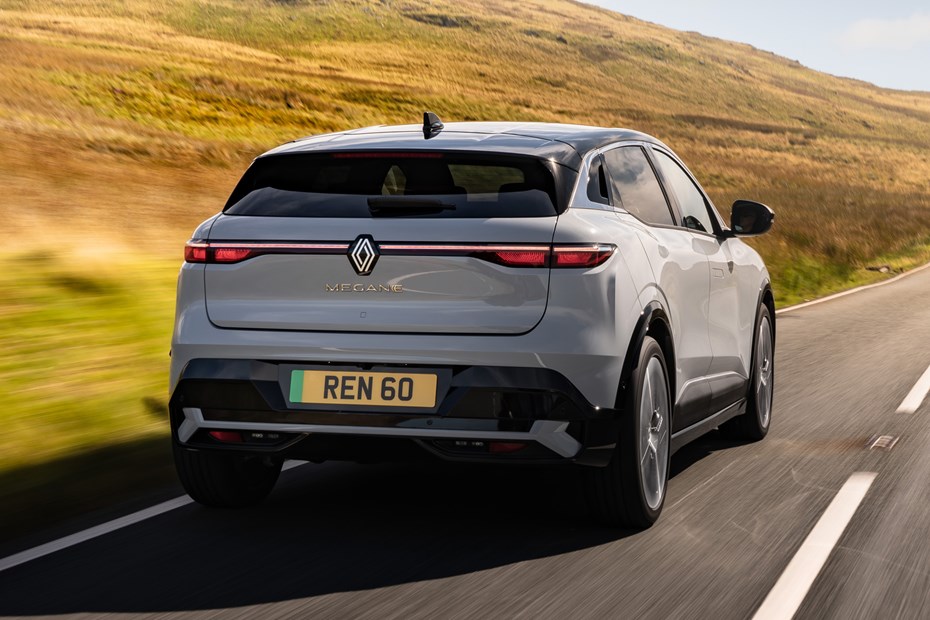
- Only one motor and battery pack available
- Quick acceleration and good range
- Reasonably engaging to drive
Electric motor
UK Renault Megane E-Tech buyers are offered just one electric powertrain. It pairs a 60kWh battery pack with an electric motor driving the front wheels. The system has a maximum output of 217hp and 300Nm of torque, which is more than enough to make the car feel spry.
Mash the accelerator into the bulkhead and the Megane will sprint from 0–62mph in 7.5 seconds before topping out at 99mph. That’s about the same as the entry-level 58kWh version of the Cupra Born – but it’s around a second slower than the more expensive 77kWh variant.
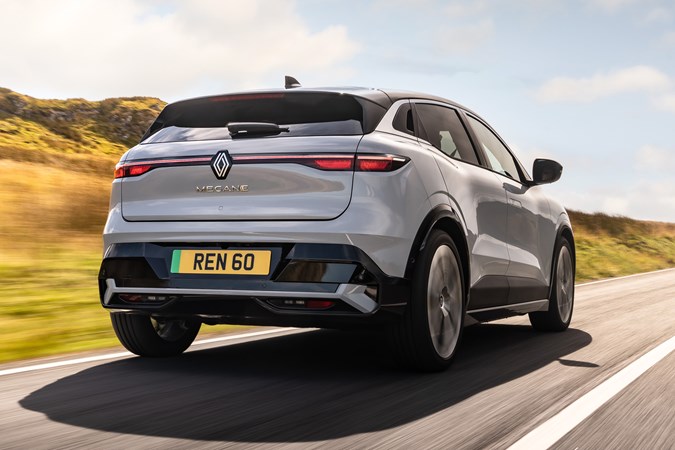
Performance is still strong, though. The Megane’s eager acceleration doesn’t tail off as the speed builds, which means you always have the confidence to step out into faster traffic or dart around a tractor on an A-road. There’s also more than enough power to light up the front wheels if you exit a junction with heavy right foot.
What’s it like to drive?
- It’s not hot – it’s warm
- Unsettled ride on challenging roads
- But smooth and refined on the motorway
Let’s get one thing straight from the off. Even though it has around 20hp more than the Ford Fiesta ST, the Renault Megane E-Tech Electric is not a hot hatchback. It’s a family hatch first and foremost, although the company’s engineers have peppered it with a few sporty party tricks.
Take the steering, which changes depending on the drive mode. In Comfort mode, it’s responsive but it’s a little too light to please keen drivers. However, you can back off the assistance by switching the car to Sport mode using an F1-style steering-wheel mounted button. The heavier steering makes it easier to tell where the front wheels are pointing – and the amount of feedback filtering from the road surface into your fingertips is enough to pique the interest (but not thoroughly enthral) keen drivers.
We found the suspension to be a bit of a mixed bag, but we suspect that’s due to our test car’s enormous 20-inch alloy wheels. The Megane E-Tech’s handling is sure-footed on clean tarmac. Body roll is well controlled and the damping is supple enough to cope with mid-corner bumps without throwing the car off its line. If you chuck the Megane down a broken back road, though, some cracks will show.
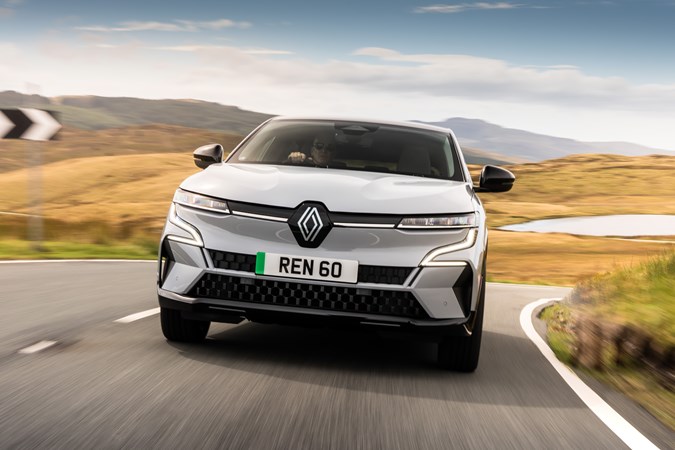
The low-profile tyres make the suspension fidget as they don’t have any give. They pass more vibrations from the road through the wheels and into the car. And, although the centre of gravity is low, we found the Megane to be quite nose heavy. There isn’t a lot of weight over the rear axle, as the battery stops at the rear seats, which makes the car pitch slightly over crests.
We’ll admit that we drove down one of the most pockmarked secondary roads this side of Siberia, so our results are from an extreme usage case. For 99% of the time, the Megane E-Tech Electric is a very comfortable place to be – especially on the motorway, where it manages to iron out all but the deepest craters and widest expansion joints. It’s a polished performance overall and much more fun to drive than the Volkswagen ID.3.


